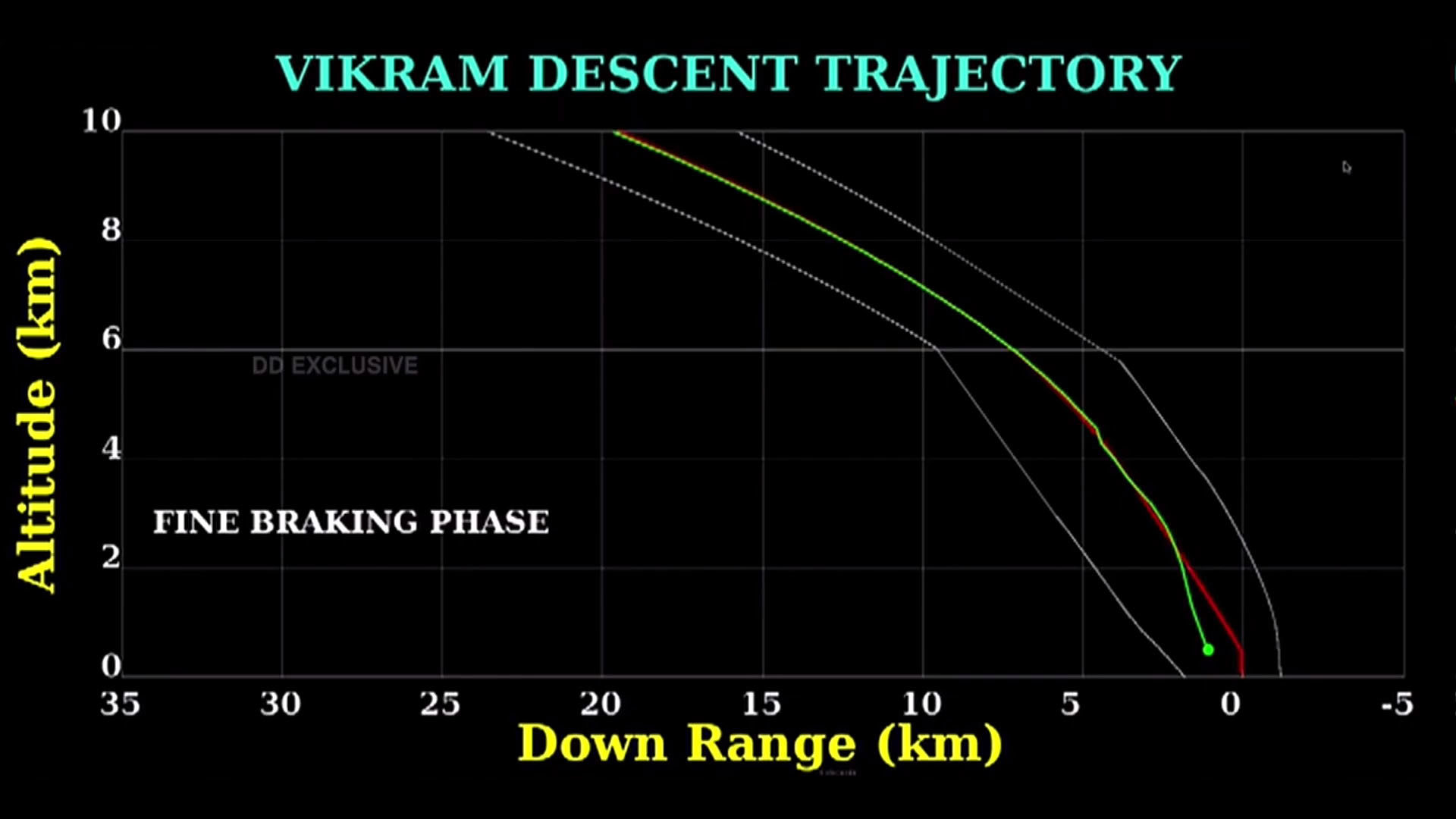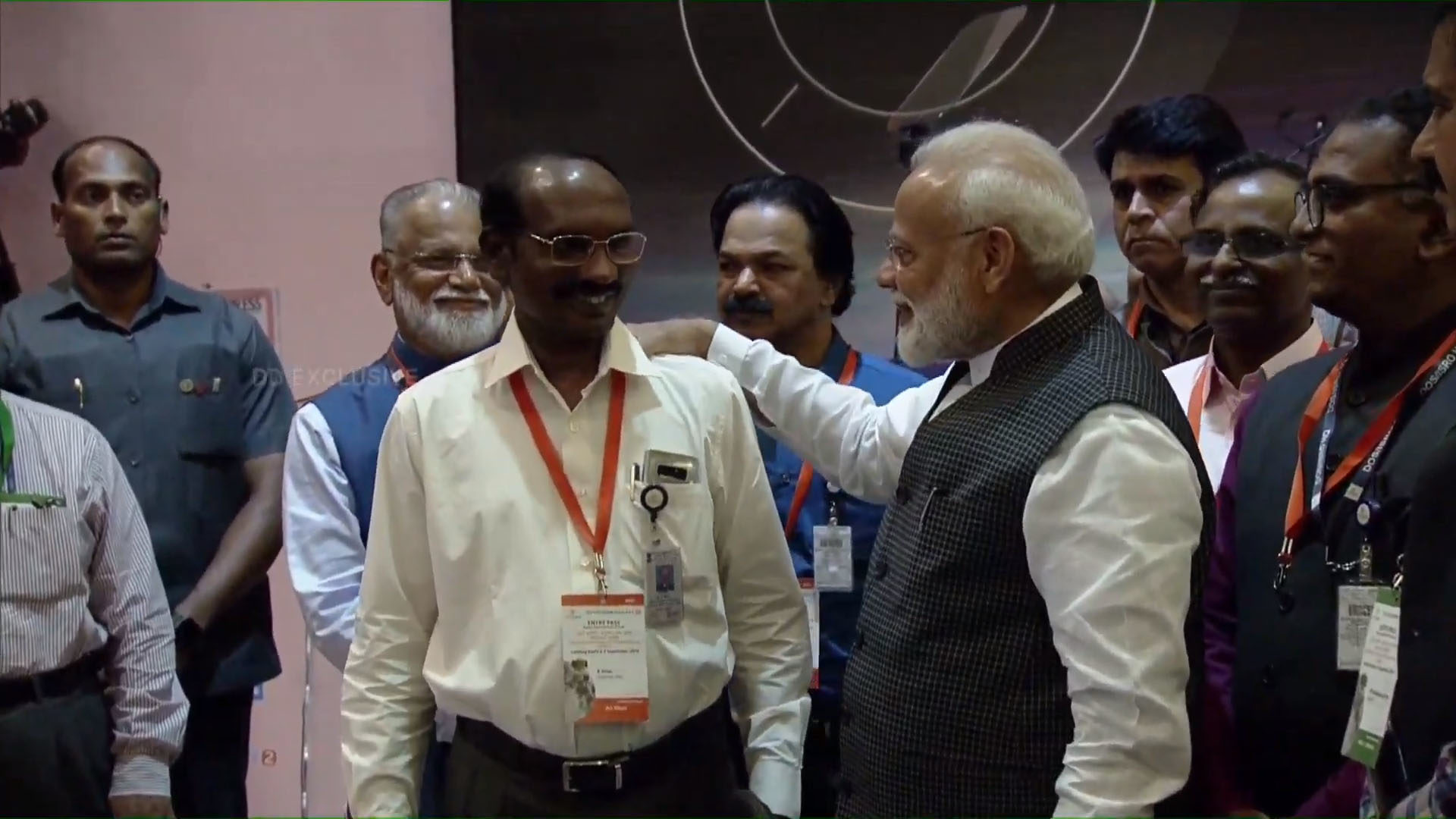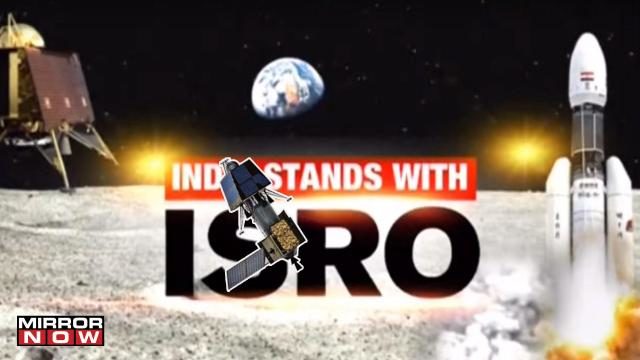Long, tense minutes stretched out inside the mission control center for the Indian Space Research Organization (ISRO), which designed the Chandrayaan-2 spacecraft. Prime Minister Narendra Modi had arrived onsite at the ISRO Telemetry, Tracking and Command Network (ISTRAC) in Bengaluru, India, about half an hour before touchdown of the landed component, dubbed Vikram, was scheduled to take place.
That announcement came at 4:48 p.m. EDT (2048 GMT) from K. Sivan, the director of ISRO. "Vikram lander descent was as planned and normal performance was observed up to an altitude of 2.1 kilometers [1.3 miles]," Sivan said in an announcement at mission control. "Subsequently the communications from the lander to the ground station was lost. The data is being analyzed."

"What we achieved is not small," Modi added. "Wish you all the best."
Comment:
'Our resolve only grows stronger': Modi encourages Indians after failed Moon landing attempt
Indian PM Narendra Modi praised Indian scientists and promised the country's space program had not yet seen its finest hour after the loss of the Vikram lunar lander as it attempted its descent to the Moon.
"The entire nation was awake in solidarity with our scientists who had embarked on one of the most ambitious mission of space. You are exceptional citizens who have given incredible contribution in progress of the nation," Modi said as he addressed the scientists following a sleepless night at ISRO.
"There will be many more opportunities to be proud and rejoice," Modi told the nation in a televised address on Saturday after being briefed on the spacecraft's fate. "At the same time, we are full of confidence that when it comes to our space program, the best is yet to come."There are new frontiers to discover and new places to go. We will rise to the occasion...to our scientists, I want to say, India is with you.
Sivan did not specify when ISRO would be able to provide updates about the fate of the Vikram lander. According to data shown during the descent maneuver, the lowest altitude reported back to Earth was 0.2 miles (0.33 kilometers) above the lunar surface.
Comment:
Vikram intact in one piece: Isro making all-out efforts to restore link with Chandrayaan 2 lander
Isro has said that lander Vikram is still in one piece and they are trying to establish contact with it after it crash landed on the lunar surface on Saturday.
ot losing hope, the Indian Space Research Organisation (Isro) continued to make all-out efforts to establish link with Chandrayaan-2's 'Vikram' lander, now lying on the lunar surface after a hard-landing.
Vikram, with rover 'Pragyan' housed inside it, hit the lunar surface after communication with the ground-stations was lost during its final descent, just 2.1 km above the lunar surface, in the early hours of Saturday.
"It had a hard-landing very close to the planned (touch-down) site as per the images sent by the on-board camera of the orbiter. The lander is there as a single piece, not broken into pieces. It's in a tilted position," an Isro official associated with the mission claimed on Monday.
"We are making all-out efforts to see whether communication can be re-established with the lander," the official said.
...
An ISRO official said: "Unless and until everything is intact (lander), it's very difficult (to re-establish contact). Chances are less. Only if it had soft-landing, and if all systems functioned, then only communication can be restored. Things are bleak as of now."
"I will rate it (restoring link) as good," another senior official of the space agency said, raising hope that lander springing to life again is not ruled out.
...
Vital thing is antennas will have to pointed towards the ground station or the orbiter. Such operation is extremely difficult. At the same time, chances are good and we will have to keep our fingers crossed," the official said.
The official said the lander generating power is not an issue, as it has "solar panels all around it" and it also has "internal batteries" which "are not used much."
Extra brake thrust may have sent Vikram lander out of control in home stretch
When silence descended on the Isro mission control and millions of Indian homes minutes before Vikram was to touch down on the Moon at 1.53am on Saturday, many thought the lander had too little thrust to brake to a halt. A day later, Isro scientists are looking at whether Vikram had too much braking thrust, which spun it out of control.
"We thought one of the thrusters may have underperformed," said an Isro scientist. "But after some preliminary analysis, it looks like a thruster overperformed.
Descending from its orbit 30km from the Moon, Vikram had achieved perfect roughbraking for 10 minutes, reducing its velocity from 1,680 metres per second to 146 metres per second. Soon after the fine-braking that signalled Vikram's last 5km descent to the Moon, mission control lost contact with the lander.
Officially, Isro maintained that data was still being analysed. However, a scientist told TOI, "Vikram's legs were to be horizontal during the roughbraking and had to be rotated by 90 degrees to bring them vertical to the landing surface before fine-braking. At this point, the thrust might have been more than optimal, impacting the lander's orientation. It's like a car losing direction due to sudden braking at high speed."
A plot comparing live data received to the mission's trajectory suggested that Vikram was about 0.6 miles (1 km) horizontally off-track from the targeted landing site when communications stopped.
Comment:
Lost Indian lander found on Moon's surface as team tries to re-establish contact
The Indian Space Research Organisation says it has found the lander lost during Saturday's failed attempt to land it on the Moon. Communication with the spacecraft was lost in the final moments before touching down.
Indian space program officials said on Saturday that they would continue trying to re-establish contact with the Vikram lander for a fortnight. However, even after finding the craft on Sunday, they aren't overly optimistic about the chances of successfully renewing communications, according to Indian media reports.
High-spec equipment on board the Chandrayaan 2 lunar orbiter captured a thermal image of the downed lander, ANI reports, helping the team back on Earth identify its location and sparking some hope of re-establishing contact with the craft.
"India is proud of our scientists!" Modi wrote in a Twitter update shortly after learning of the anomaly. "They've given their best and have always made India proud. These are moments to be courageous, and courageous we will be!"
"We remain hopeful and will continue working hard on our space programme," he added.
Chandrayaan-2 consisted of three components — an orbiter, a lander named Vikram and a rover named Pragyan — which together launched to the moon on July 22 atop a Geosynchronous Satellite Launch Vehicle Mark III (GSLV Mk III) rocket. It took nearly 7 weeks to arrive at its destination; Chandrayaan-2 arrived in lunar orbit on Aug. 20, and the lander separated from the orbiter on Sept. 2 to begin its descent to the lunar surface.
The lander and the rover were designed to spend one lunar day — about 14 Earth days — investigating the lunar surface with a variety of scientific instruments. Both were expected to shutdown come nightfall at the moon's south pole, because they weren't built to withstand to frigid temperatures of the lunar night.

From its vantage point at an altitude of about 62 miles (100 kilometers) above the moon's surface, the orbiter uses eight scientific instruments and cameras to study Earth's natural satellite from afar. The following are among the payloads:
- An X-ray spectrometer to measure the abundance of different elements on the moon.
- A solar X-ray Monitor, which studies high-energy radiation from the sun.
- A dual-frequency synthetic aperture radar to map the lunar surface.
- The Chandrayaan-2 Atmospheric Compositional Explorer 2 (CHACE 2), which studies the composition of the moon's exosphere, or ultrathin atmosphere.
- A radio science experiment that will study electrons in the moon's ionosphere.
Today's possible failure may mark the second time ISRO has crash-landed a spacecraft on the moon. The country's first lunar mission, Chandrayaan-1, launched in 2008 and consisted of only an orbiter, which successfully conducted vital research at the moon, and an impactor. Chadrayaan-1 operated for about 10 months.
Chandrayaan-2 bears some similarities to Chandrayaan-1, but it carried new and improved technologies that ISRO is testing for future planetary missions — like its next mission to Mars.
India had announced tentative plans to launch a third moon mission called Chandrayaan-3 in 2024. Like Chandrayaan-2, that mission would include a lunar rover.
India was striving to become the fourth country to soft-land on the lunar surface, after the United States, Russia and China. The fatal crash of the Vikram lander comes just months after Israel's first moon mission, Beresheet, met a similar fate.
But unlike Beresheet, Chandrayaan-2's mission lives on in the orbiter that will circle the moon, alone two weeks before its time.




And yet governments never ever lie to us about the moon and space. It's refreshing to realize that.
Right?